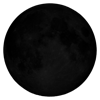Tania Borealis - λ Ursae Majoris (lambda Ursae Majoris)
Tania Borealis, also designated as λ Ursae Majoris (lambda Ursae Majoris), is a sub-giant star of spectral class A2 in the constellation of Ursa Major.
Tania Borealis visual magnitude is 3.45. Because of its moderate brightness, Tania Borealis is easily visible to the naked eye from locations with dark skies, while it might be barely visible, or not visible at all, from light-polluted skies.

Celestial Coordinates
Apparent
J2000
Galactic Coordinates
Finder Chart

Magnitude, Color, Spectral Class
The red dot in the diagram below shows where Tania Borealis is situated in the Hertzsprung–Russell diagram.

Distance, Radial Speed, Proper Motion
Tania Borealis is distant 134.32 light years from the Sun and it is moving far from the Sun at the speed of 18 kilometers per second.
Alternative Designations
Visibility from Your Location
Tania Borealis - λ Ursae Majoris (lambda Ursae Majoris) is circumpolar and transits at 16:02 UTC (altitude: 81.3°)









